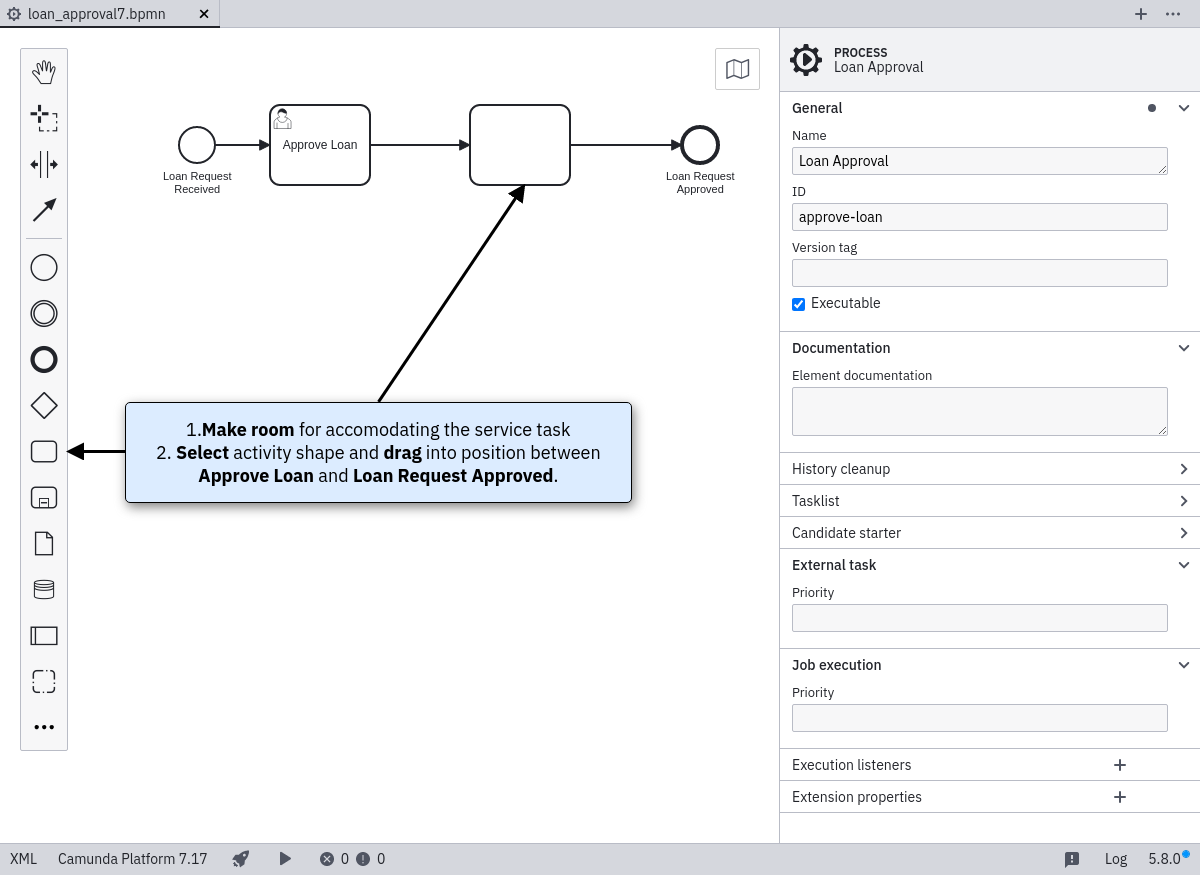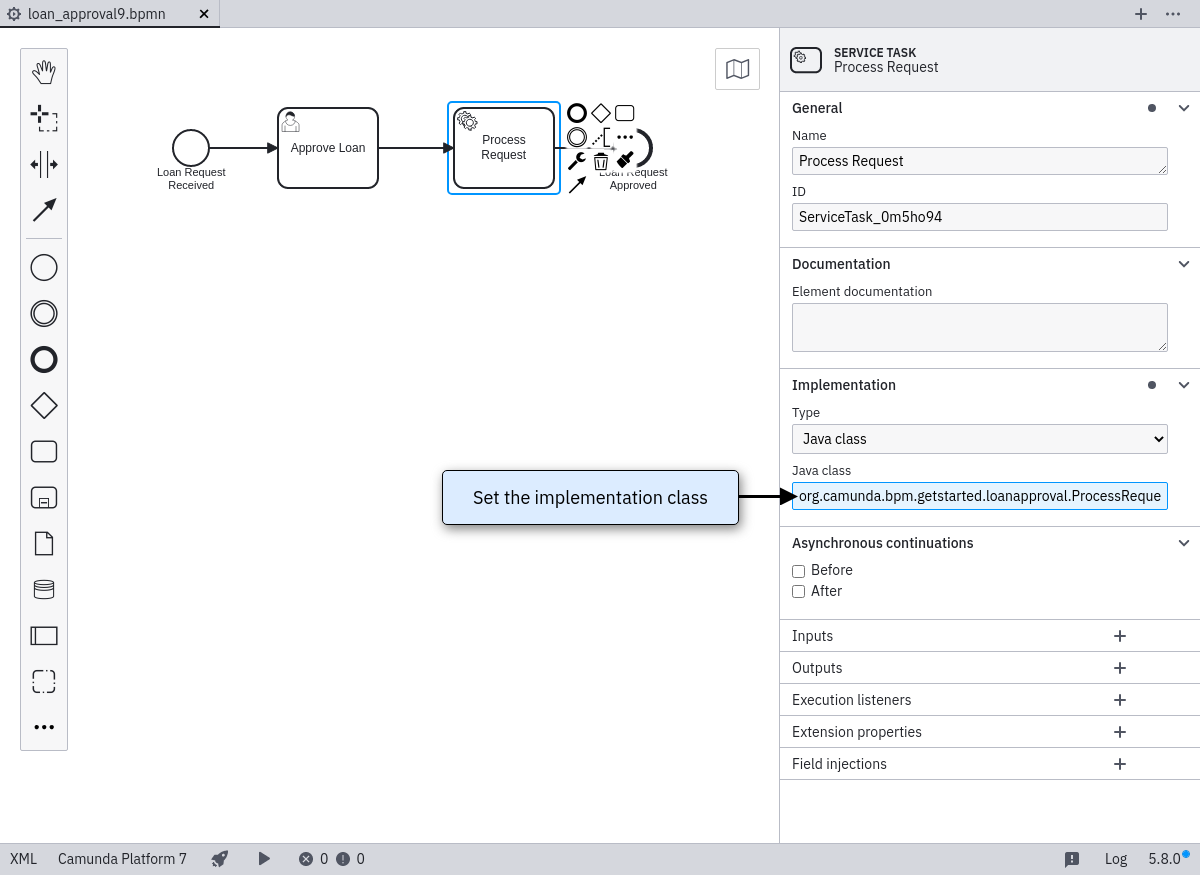Invoking a Java Class from a BPMN 2.0 Service Task
In the last section of this tutorial we learn how to invoke a Java class from a BPMN 2.0 service task.
Add a Service Task to the Process
Use the Camunda Modeler to add a service task after the user task. To do so, select the activity shape (rectangle) and drag it onto a sequence flow (see screenshot). Name it Process Request. Change the activity type to Service Task by clicking on it and using the wrench button.


Add a JavaDelegate Implementation
Now we need to add the actual service task implementation. In the Eclipse project, add a class into the package org.camunda.bpm.getstarted.loanapproval named ProcessRequestDelegate implementing the JavaDelegate interface:
package org.camunda.bpm.getstarted.loanapproval;
import java.util.logging.Logger;
import org.camunda.bpm.engine.delegate.DelegateExecution;
import org.camunda.bpm.engine.delegate.JavaDelegate;
public class ProcessRequestDelegate implements JavaDelegate {
private final static Logger LOGGER = Logger.getLogger("LOAN-REQUESTS");
public void execute(DelegateExecution execution) throws Exception {
LOGGER.info("Processing request by '" + execution.getVariable("customerId") + "'...");
}
}
Configure the Class in the Process
Use the properties view to reference the service task in the process (see screenshot). You need to provide the fully qualified classname of your class in the Java Class property field. In our case this is org.camunda.bpm.getstarted.loanapproval.ProcessRequestDelegate.

Save the process model and update it in Eclipse. Build, deploy and execute the process application. After completing the Approve Loan step, check the logfile of the Apache Tomcat server:
INFO org.camunda.bpm.getstarted.loanapproval.ProcessRequestDelegate.execute Processing request by 'GFPE-23232323'...
Classloading with a shared process engine
The process engine resolves the ProcessRequestDelegate class from the application classloader. This allows you to
- have a different classloader for each Process Application,
- bundle libraries inside your application,
- (re-)deploy the application at runtime (without stopping / restarting the process engine).
Catch up: Get the Sources of Step-5.
Download as .zip or checkout the corresponding tag with Git.
You can checkout the current state from the GitHub repository.
If you have not cloned the repository yet, please execute the following command:
git clone https://github.com/camunda/camunda-get-started-java.git
To checkout the current state of the process application please execute the following command:
git checkout -f Step-5Or download as archive from here.